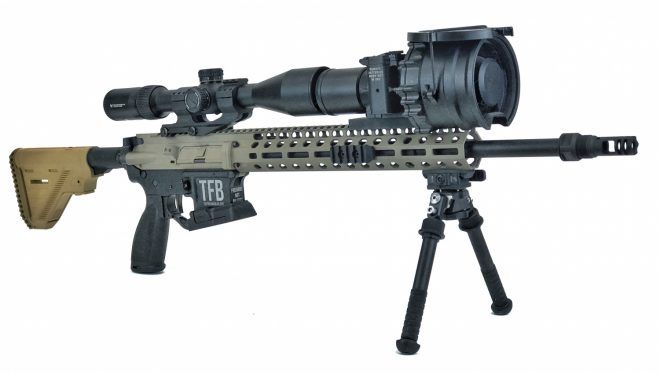A year and a half ago I got a chance to briefly check out my friend JW’s Knights Armament PVS-30. It is a CNVD (Clip-on Night Vision Device) used for shooting long distances in the dark. Well, now we will take a look at something similar called the MUNS PVS-27.
Magnum Universal Night Sight (MUNS) PVS-27

PVS-27 next to a PVS-30
The PVS-27 was made by Optical Systems Technology Inc. (OSTI) which is now part of FLIR. As the name hints, the MUNS is rated for magnum calibers that the US military might use like the .338 Lapua Magnum and .50 BMG. However even the KAC PVS-30 is rated for up to .50 BMG. They are both CNVD and are to be mounted in front of a day optic.The US Marines were issued PVS-27s.

Photo by Defense Media Network
Just like the PVS-30, the PVS-27 is designed optically so that the unit does not have to be perfectly centered with your day optic. There is no parallax issues and you should not have POA shift when using them.

PVS-26 next to a PVS-27


Other than the giant objective lens, most of the PVS-27 is similar to the PVS-30 and PVS-26. The gain control knob is the on/off switch and when you turn it on it starts at full gain. All of them run off of 2x AA batteries. If you notice, the batteries are positioned perpendicular to the recoil of the rifle. That way you do not have the batteries smashing into the contacts under recoil.
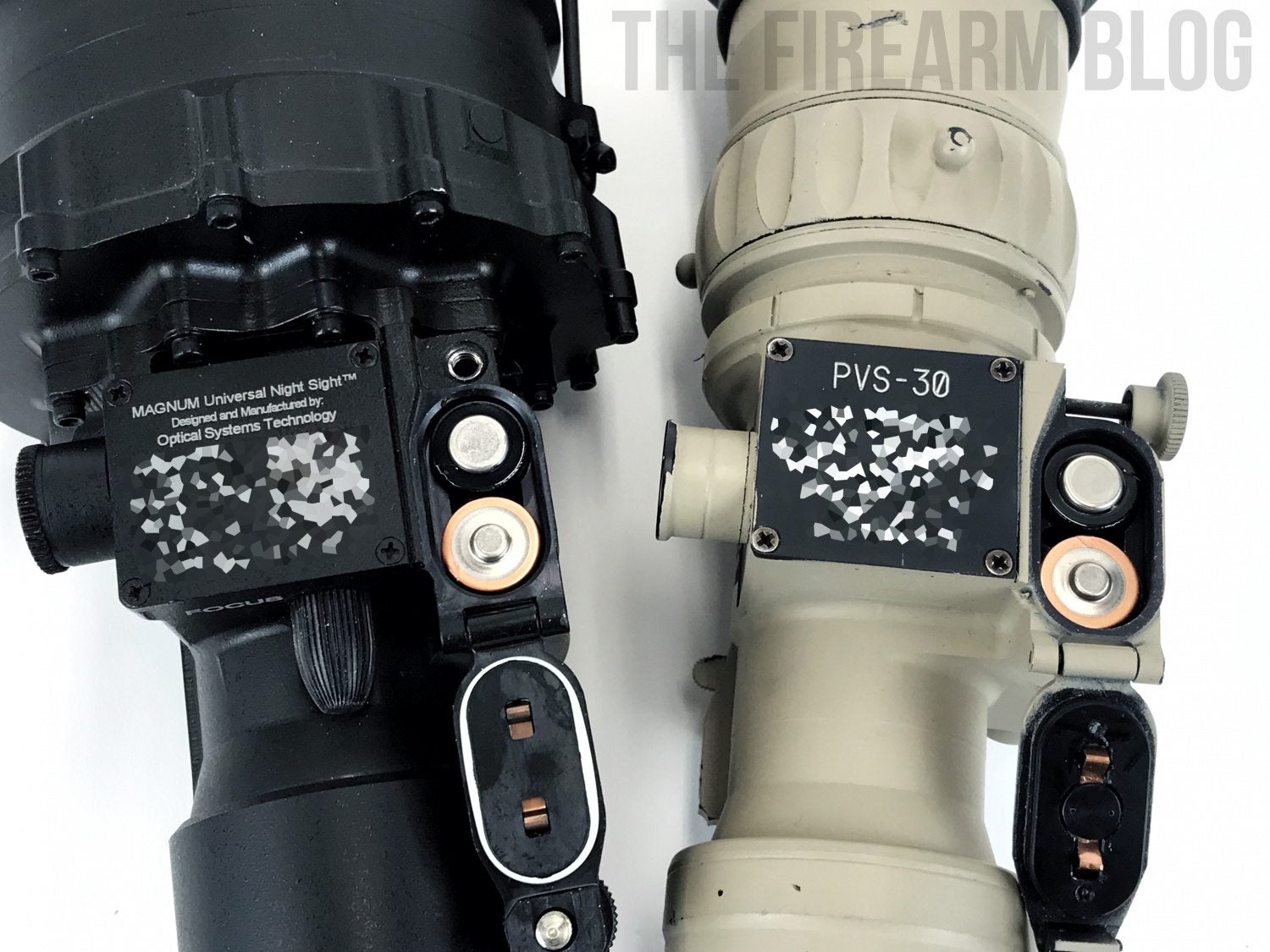
The PVS-26 and the PVS-30 are similar that they could be twins. However, the PVS-27 stands out because of its objective lens design. You will notice the PVS-27.
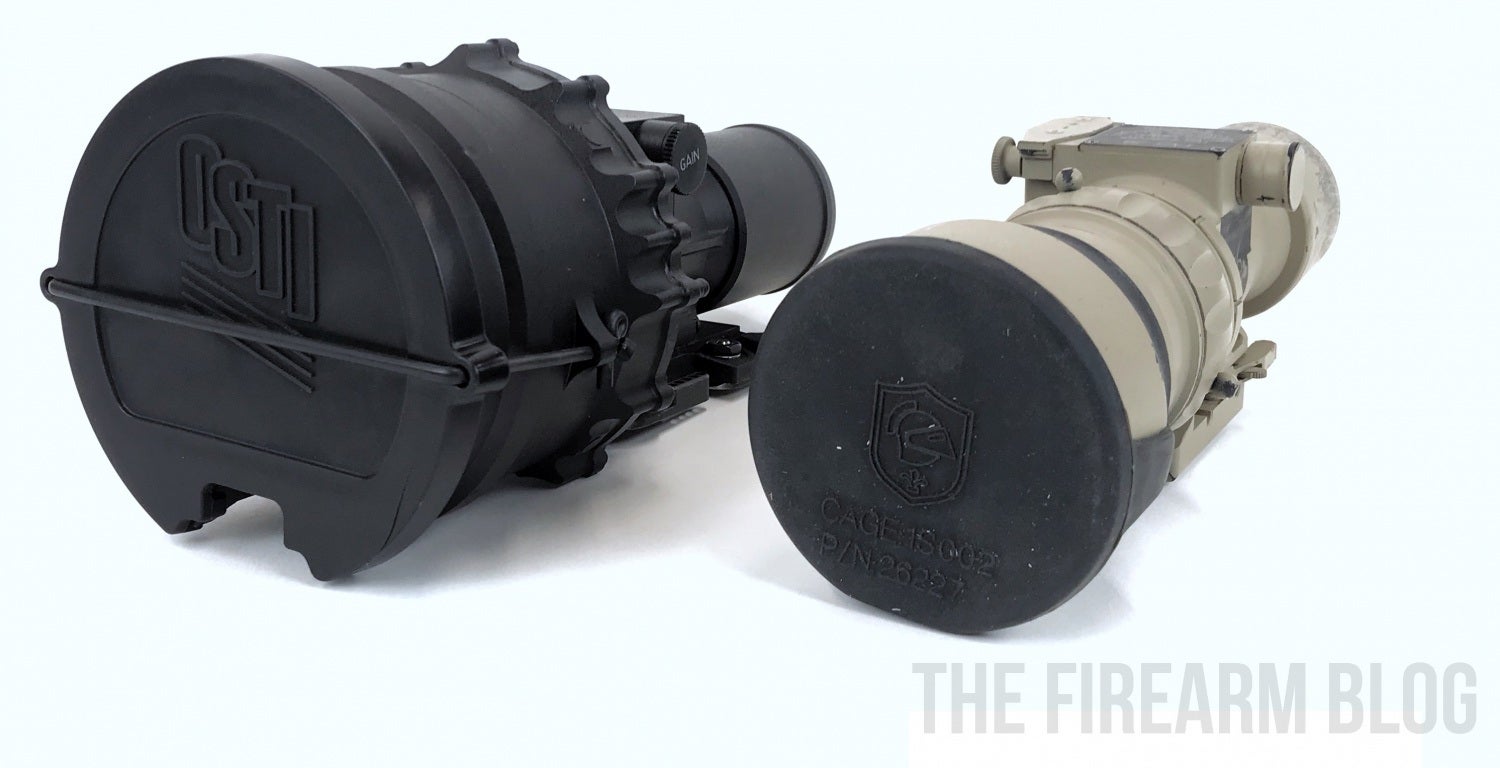
The PVS-30 uses regular lenses somewhat like a scope. However, the PVS-27 differs by using an oversized reflex lens. See the black circle in the center of the lens? Light enters around the sides of it, hits a parabolic mirror, then bounces up under that black circle cap to another mirror and down into the center toward the image intensifier tube.

Here is a photo that explains how a reflex lens works. They are often used for telescopes. They are more compact than a telephoto style lens and while there are some minor aesthetic issues regarding their use for photography, it is not an issue for use with CNVD and observing in the dark. For more info on reflex lens or AKA mirror lens, check out this website.
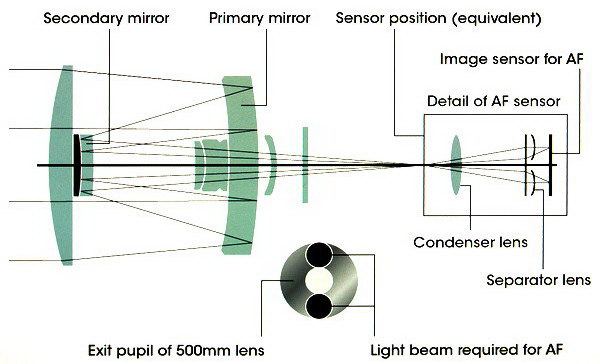
Photo by Kurt Munger explaining a mirror lens for a Sony camera.
Did you notice the notch at the bottom of the lens? Due to the sheer size of the objective lens, they had to make a cutout notch to clear Picatinny rails when mounted on a rifle.


The PVS-27 uses dual LaRue throw levers which I found to be extremely easier to use than the mount used on the PVS-26 and PVS-30.


The PVS-30 mount, which is the same on the PVS-26 is a solid mount. But trying to open the latch feels like you are going to break something or bust a knuckle trying to do it.

Due to the reflex lens design, the focus adjustment is different than the PVS-30. See the picture below. The PVS-30 has a large knurled ring with three spherical knobs on it. You can see one in the picture. You rotate that entire ring to focus the PVS-30.

The PVS-27, on the other hand, has a small dial just behind the box with the serial number plate. This dial is pointed back toward the shooter and is there for closer to the shooter. It is about 2-3 inches closer. When trying to adjust focus on the PVS-26 or PVS-30 it can be impossible to be behind the gun looking through your scope at the same time. With the PVS-27 dial closer to the shooter it is not as difficult.

Shooting With The PVS-27
I have not had the opportunity to use the PVS-27 under a full moon. However I was more interested to see how it performs on a moonless night. The images below are not great looking but the performance was amazing.
That fourth transmission tower, just to the right of the crosshairs is approximately 1,300 yards away. Photographed on a moonless night.

These pond monsters (ducks or possibly geese) were 150 yards away.
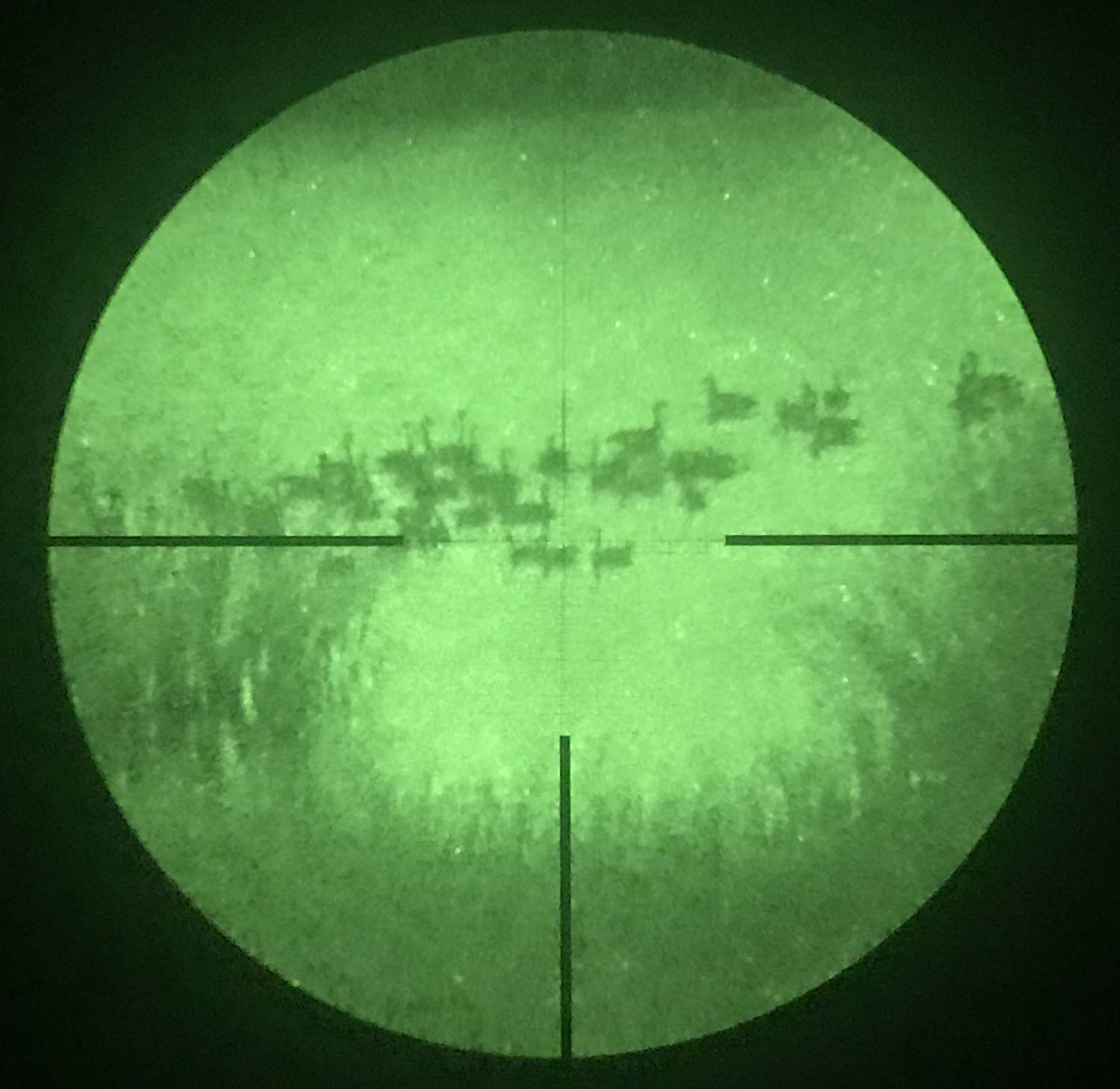
I did not have a chance to photograph it but at a 1000 yard rifle range I was able to see the steel target at night without any moonlight. Granted it was a large white painted 36″x36″ square target. When compared to the PVS-30 I was unable to see any significant difference in clarity or image intensification. Now, of course, the image intensifying tubes are totally different and I have no idea what the specs are on those tubes to know if they are similar or not.

I do like using it on my Ruger Precision Rimfire and shooting out to 200-300 yards at night with it. Here is a video where I first tested the PVS-27 but I was shooting at a local public range that does allow shooting after dark. They use portable LED lights and set them downrange to illuminate your targets. You don’t need lights though when you have night vision.
There is a blackout shroud, basically a mouse pad with velcro that comes with the PVS-27. It is to help block ambient light from seeping inbetween the PVS-27 and your day scope and skewing the image you see. In the video below I was shooting in an area with a considerable about of lighting above me but my target was 100 yards down range in the dark. So I used the wrap-around shroud.
Once my Ruger Precision in 6.5 Creedmoor arrives then I will be using the PVS-27 on it as well.
Is The PVS-27 Worth It?
CNVDs like the PVS-30 have been popping up on the market lately. My friend’s PVS-30 was one of the many refurbished units sold by EuroOptic and you can get them for around $4,500. Lately, I have been seeing PVS-27s pop up. I got this one for under $4k but have seen them recently go for up to $6k. If you can find a PVS-27 for less than the refurbished PVS-30 and the image intensifier is clean without any blems, then sure get it.
My other friend with the PVS-26 has difficulty seeing steel at 1,000 yards without a full moon or compensate with a good IR illuminator like a full power DBAL. The PVS-27 and the PVS-30 are similar from what I saw and the PVS-27 could see steel at 1,000 yards without additional light. However these were seen and tested at different locations and at different times. Next up I will try and test all of these units at the same time and the same place to isolate any variables like ambient lighting and see how they compare against each other.
Thanks to JW for lending me his painted PVS-30 again.
 Your Privacy Choices
Your Privacy Choices
